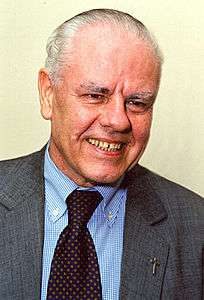Jim West diz em seu blog Biblical Theology que está começando a preparar um curso sobre Jeremias, no qual lerá todo o texto do livro do profeta com seus alunos. E diz também que Jeremias é seu preferido por ter a coragem de denunciar claramente o que está acontecendo, mesmo quando enfrenta terrível oposição:
It is, I confess, my favorite book of the Bible. I love Jeremiah’s directness and willingness to “tell it like it is” – even in the face of incredible opposition.
E avisa que, nos próximos meses, podemos esperar várias menções de Jeremias em seu biblioblog.
Pois é. Jeremias é também o meu profeta preferido, pois admiro sua coragem e garra no combate aos opressores de sua época. Pois foi essa “paixão” que me levou, em 1992, a publicar pela Paulus (então Edições Paulinas) um livrinho de 143 páginas sobre Jr 1,4-19, o texto da vocação de Jeremias. Saiu com o título: Nascido Profeta: a vocação de Jeremias. Considero-o, dos poucos que escrevi, o melhor. Esgotou-se a edição em dois anos.
A apresentação do livro foi feita por meu amigo e, à época, coordenador do grupo Biblistas Mineiros, Alberto Antoniazzi. Agora, no dia de Natal, fez um ano que  Antoniazzi nos deixou, depois de lutar meses contra um câncer. Lembrando-me de Jeremias, que lecionarei no próximo semestre como parte da disciplina Literatura Profética, lembrei-me, do mesmo modo, do persistente Antoniazzi, inteligência brilhante, intelectual de múltiplas qualidades e, ao mesmo tempo, pessoa extremamente gentil. Transcrevo abaixo a apresentação que fez de meu livro como uma forma de homenageá-lo.
Antoniazzi nos deixou, depois de lutar meses contra um câncer. Lembrando-me de Jeremias, que lecionarei no próximo semestre como parte da disciplina Literatura Profética, lembrei-me, do mesmo modo, do persistente Antoniazzi, inteligência brilhante, intelectual de múltiplas qualidades e, ao mesmo tempo, pessoa extremamente gentil. Transcrevo abaixo a apresentação que fez de meu livro como uma forma de homenageá-lo.
Não se engane o leitor curioso, que abrir este livro. Não se trata, como o título poderia sugerir, apenas de um comentário ao relato da vocação de Jeremias, isto é, a poucos versículos iniciais do livro (Jr 1,4-19). Na realidade, este livro é uma análise de toda a existência do profeta Jeremias, à luz de sua vocação.
Também não é este livro, como a rica bibliografia e as notas numerosas ao pé das páginas podem sugerir, antes de tudo uma obra técnica, um trabalho acadêmico. Aqui a ciência bíblica, a “exegese”, é usada, sim, mas a serviço de uma leitura que restitui à palavra de Jeremias o seu caráter de palavra profética, palavra de Deus, palavra que o Senhor Javé pôs na boca do seu porta-voz, palavra extremamente atual. Talvez o leitor se surpreenda com a atualidade dessa leitura e se pergunte se o autor deste livro não tenha colocado o Brasil dos anos ’80 e ’90 na boca de Jeremias, tão atuais são as críticas do profeta à irresponsabilidade das elites dirigentes, à política exterior, ao abuso da religião, a tudo o que oculta a verdadeira face de Deus e ameaça destruir a esperança do povo.
Não se engane, enfim, o leitor com relação a Jeremias. Por muito tempo, ele teve, em nosso meio, a fama de “chorão”. As línguas latinas, inclusive o português, conhecem substantivos como “jeremiada” ou verbos como “jeremiar” para indicar a lamúria insistente e inoportuna, a lamentação vã e sem fim… Na realidade, o grande profeta – apesar de insistir muito mais na denúncia dos males que no anúncio de um futuro feliz – é, como ele diz, homem em cuja boca as palavras se tornam fogo (Jr 5,14). Esse fogo, que lembra o que Jesus queria acender sobre a terra (Lc 12,49), queima por dentro também o Autor deste livro e faz desta obra algo que tem, ao mesmo tempo, a claridade e o calor do fogo.
Alegra-me que esta obra, que reúne tão felizmente a competência científica e o ardor profético, tenha sido escrita por um brasileiro, que junta a anos de estudos em Roma, no Pontifício Instituto Bíblico, muito mais anos de vivência em nossa realidade. Temos assim não mais uma tradução de uma obra estrangeira, nascida em outro contexto, de boa ou ótima qualidade científica, como muitas publicadas por Edições Paulinas no campo bíblico. Temos algo que, com a mesma qualidade científica, fala mais diretamente a “corações e mentes” desta terra e deste povo.
Sobre Alberto Antoniazzi, recomendo alguns textos, como:
:. o artigo de Mauro Passos, Peregrino da esperança: Alberto Antoniazzi. Horizonte, Belo Horizonte, v. 3, n. 5, p. 53-66, 2o sem. 2004. Disponível online em pdf
:. o testemunho dos amigos em Padre Alberto Antoniazzi: Doação e AMOR à vida até o fim – Observatório da Evangelização – PUC Minas: 22.12.2015
:. a entrevista de Johan Konings em Observatório da Evangelização entrevista o teólogo biblista Johan Konings sobre Alberto Antoniazzi – Observatório da Evangelização – PUC Minas: 26.02.2016